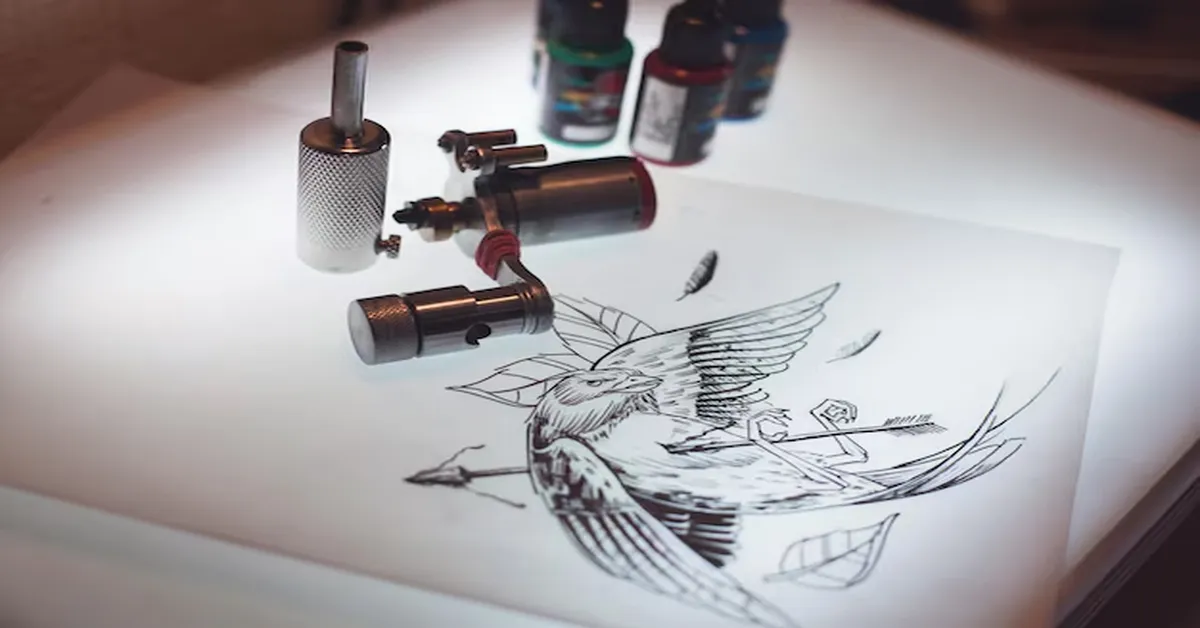Fine line tattoos have surged in popularity, captivating tattoo enthusiasts and first-timers alike. Known for their subtle, minimalist appearance, these tattoos use precise, thin lines to create delicate and intricate designs. But what makes fine line tattoos so special? In this guide, we’ll explore everything from techniques to aftercare, helping you decide if this elegant ink style is right for you.
What is a Fine Line Tattoo?
A fine line tattoo is a type of body art that uses thin, precise lines to create detailed images without heavy shading or bold outlines. This technique is perfect for minimalistic, delicate designs and is often used for small tattoos, floral patterns, script tattoos, and intricate artwork.
History & Evolution of Fine Line Tattooing
Fine line tattooing has roots in ancient body art traditions but became widely recognized in modern tattoo culture during the 1970s. Artists refined techniques to create intricate, almost sketch-like designs that cater to those seeking a more subtle and refined tattoo style.
Why Are Fine Line Tattoos So Popular?
- Minimalist Appeal – Many people prefer tattoos that are subtle and elegant.
- Less Painful – With thinner needles and lighter ink application, fine line tattoos often hurt less than traditional bold designs.
- Versatile Designs – Ideal for intricate artwork, geometric patterns, and delicate portraits.
- Faster Healing – Due to less trauma on the skin, fine line tattoos generally heal quicker than traditional ones.
Fine Line Tattoo Techniques & Tools
- Single Needle & Thin Multi-Needles – Artists use specialized needles to achieve crisp, thin lines.
- Hand-Poked or Machine Tattooing – Some artists opt for hand-poking, while others use rotary or coil machines for precision.
- Ink Application – Lighter ink saturation ensures the tattoo maintains a soft, subtle look over time.
Best Placement for Fine Tattoos
Fine tattoos work well on various body parts, but certain areas showcase them best:
- Wrists & Forearms – Perfect for subtle designs.
- Collarbones & Neck – Feminine and elegant placements.
- Ribs & Back – Ideal for larger fine line designs.
- Fingers & Hands – Popular for delicate symbols and script.
Popular Fine Line Tattoo Designs
- Floral & Botanical – Roses, lilies, and leaves are common choices.
- Minimalist Symbols – Simple geometric shapes or meaningful icons.
- Portraits & Sketch-Style Art – Fine line work enhances lifelike portraits.
- Script & Calligraphy – Elegant cursive or typewriter font tattoos.
Pros and Cons of Fine Tattoos
Pros:
✔ Delicate and elegant aesthetic ✔ Faster healing time ✔ Less painful than traditional tattoos ✔ Ideal for first-time tattoo clients
Cons:
✖ Can fade faster if not well cared for ✖ Requires an experienced artist for precision ✖ May need touch-ups due to light ink application
How to Choose the Right Tattoo Artist
Selecting the right artist is crucial for achieving a high-quality fine line tattoo. Consider these factors:
- Portfolio & Experience – Review an artist’s previous fine line work.
- Client Reviews – Look at testimonials and ratings.
- Studio Hygiene & Professionalism – Ensure the studio follows health regulations.
- Consultation & Communication – A good artist listens to your vision and provides professional advice.
Pain Level: Do Fine Line Tattoos Hurt?
Fine tattoos generally hurt less than traditional bold designs because they use fewer needles and require lighter pressure. However, pain levels vary depending on placement and individual pain tolerance.
Pain Scale (1-10) by Area:
- Wrists & Forearms – 3/10
- Ribs & Spine – 8/10
- Fingers & Hands – 6/10
- Ankle & Foot – 7/10
Aftercare Tips for Long-Lasting Results
To keep your fine line tattoo looking crisp and fresh, follow these aftercare steps:
- Keep It Clean – Wash gently with fragrance-free soap.
- Moisturize – Apply a light layer of tattoo aftercare lotion.
- Avoid Sun Exposure – Use sunscreen once healed to prevent fading.
- No Scratching or Peeling – Let the tattoo heal naturally.
- Touch-Ups – Consult your artist if fading occurs over time.
Common Myths About Fine Line Tattoos
They Don’t Last Long – While fine line tattoos may fade over time, proper care extends their longevity. Only Small Tattoos Can Be Fine Line – Large designs can also be done using this technique. They’re Painless – Though less painful, fine line tattoos still involve needles and some discomfort.
Conclusion
Fine line tattoos offer a beautiful, elegant way to express yourself through body art. Their minimalist nature, versatility, and timeless appeal make them a top choice for tattoo enthusiasts. If you’re considering one, ensure you select an experienced artist, follow proper aftercare, and enjoy your delicate new ink!
FAQs
1. Do fine tattoos fade faster?
Yes, they tend to fade quicker than bold traditional tattoos, but proper aftercare and touch-ups can maintain their vibrancy.
2. How much does a fine tattoo cost?
Prices vary based on design complexity, artist expertise, and location. Expect to pay anywhere from $100 to $500+.
3. Can you get a fine tattoo in color?
Yes, but black and gray inks are more common. Color fine line tattoos may require more touch-ups over time.
4. How long do fine tattoos take to heal?
Most heal within 2-3 weeks, but full healing may take up to a month.
5. Are fine line tattoos more prone to infection?
No, as long as you follow proper aftercare and get tattooed at a reputable studio.
Ready to get your fine line tattoo? Book a consultation with a professional tattoo artist today and bring your vision to life!









